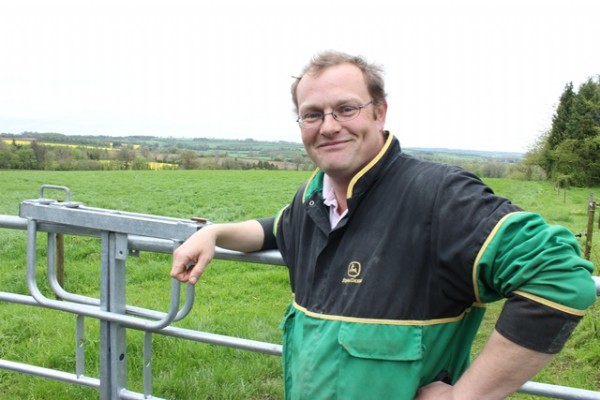

Over 15 years of growing two year ryegrass silage leys, Greg Dancer has developed great insight into the many benefits of this crop. Greg farms a thousand acres in the Cotswolds on a clay soil that’s ideal for growing two year silage grass leys which he plants to both improve soil structure and provide valuable forage for beef cattle as well as providing a second cut for racehorse hay. He now has 110 acres of ryegrass and replaces half each year.
The seeds are planted at the end of August so that the crop is well established by winter. The establishment is relatively easy in a good autumn and the seed goes in at the standard rate of 35kg per hectare. It’s flat rolled and has two applications of fertiliser, totalling 110 kilos of N per hectare.
It is then cut three times, with an estimated total yield of 18 tons a hectare of dry matter throughout the season. The first cut goes straight into the silage clamp and makes around 12ME silage at around 15% crude protein. Maize silage could be expected to produce similar ME levels but would average only about 8-9% protein, so in Greg’s opinion ryegrass silage is a win-win, giving protein as well as energy.
The 15% protein produced by ryegrass enables the farm to cut out most bought in feeds, although they do supplement in the last three to four months for fattening purposes.
Greg took over the farm from his father in 2000 and four years ago stopped growing maize altogether, a decision driven primarily by economics since maize was proving very expensive, producing only one cut and requiring the addition of protein.
Another reason for moving away from maize was that the farm suffered from bovine TB and the maize attracted badgers. With grass this is not an issue.
Having grown ryegrass for so long, Greg has made many valuable observations. For instance that it’s best to cut when the seed head is no further than half way out, before protein levels start to fall back. Waiting until the ear is fully emerged can result in protein levels dropping from 15% to 10% in just a fortnight.
Ryegrass is also a good arable break in terms of black grass control as the ley is left for two years and may even stretch to three which will reduce the seedbank of viable black grass seeds by 70-80%.
In addition, making hay from the ryegrass on the 2nd or 3rd cut returns a huge amount of ryegrass seed to the sward, so can reduce the need for an overseeding.
Date Posted: 30th March 2017



